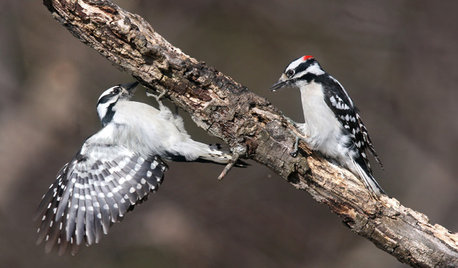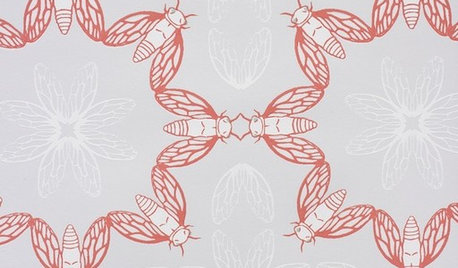Infestation Follow-up; photos of bugs, can you identify?
15 years ago
Related Stories

GARDENING FOR BIRDSBackyard Birds: How to Identify Two Common Woodpeckers
Downy and hairy woodpeckers have similar coloration and behavior. But there are two big differences that separate them
Full Story
LANDSCAPE DESIGNFollow Nature’s Lead for Artful Stacked Stones
Surprise and delight in the landscape with rock formations resembling wildland hoodoos and cairns
Full Story
MIDCENTURY STYLEFollow One Man’s Midcentury-Mailbox Dream
An ill-fitting mailbox leads a determined dad on a quest — and possibly to a new business
Full Story
PRODUCT PICKSGuest Picks: Decor to Make Your Eyes Bug Out
Insects are marching to a different tune these days, showing up on knobs, teapots and even tablecloths
Full Story
GARDENING AND LANDSCAPINGBid Bad Garden Bugs Goodbye and Usher In the Good
Give ants their marching orders and send mosquitoes moseying, while creating a garden that draws pollinators and helpful eaters
Full Story
GARDENING AND LANDSCAPINGPorch Life: Banish the Bugs
Don't let insects be the bane of your sweet tea and swing time. These screening and product ideas will help keep bugs at bay on the porch
Full Story
GARDENING GUIDES4 Ways Gardens Can Go Beyond Aesthetic Beauty
Our landscapes can play an even more meaningful role if we rethink their purpose
Full Story
LIFEHow Your Landscaping Can Keep Burglars Away
Prevent home break-ins with strategic landscaping and good practices instead of menacing — and maybe less effective — measures
Full Story
LIFEThe Polite House: How Can I Kindly Get Party Guests to Use Coasters?
Here’s how to handle the age-old entertaining conundrum to protect your furniture — and friendships
Full Story
ORGANIZING4 Questions to Help You Organize Your Favorite Photos
Organize your keeper photos with a system that's just right for you, whether it's in the cloud or you can hold it in your hand
Full Story







gottagarden
lindac
Related Professionals
Allentown Landscape Architects & Landscape Designers · Eden Prairie Landscape Architects & Landscape Designers · Salem Landscape Architects & Landscape Designers · Middletown Landscape Contractors · Wakefield Landscape Contractors · Avocado Heights Landscape Contractors · Boca Raton Landscape Contractors · Harrisburg Landscape Contractors · Lebanon Landscape Contractors · Oak Harbor Landscape Contractors · Peoria Landscape Contractors · Tacoma Landscape Contractors · West Chicago Landscape Contractors · Tyngsboro Landscape Contractors · Reisterstown Landscape ContractorsMarie Tulin
cannedam
jean001
schoolhouse_gw
robynpa
julianne75Original Author
colleen_mi
gottagarden
julianne75Original Author
lindac
morz8 - Washington Coast
julianne75Original Author